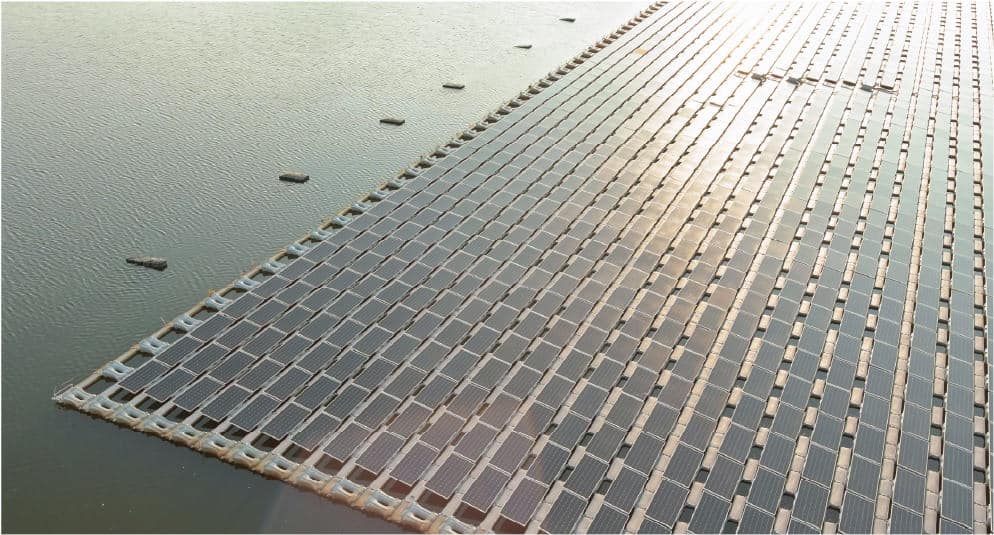An Introduction to Floatovoltaics
Have you heard of “floatovoltaics”? While most of us are no strangers to roof-mounted and ground-mounted solar PV systems, many may not have heard of this relatively new, but rapidly growing industry – Floatovoltaics.
To keep up with the world’s intensive energy demands, solar panels require huge amounts of land space that could be otherwise used for agriculture, infrastructure or kept for wildlife and conservation efforts. Stemming from this issue, one of the solutions introduced was “floatovoltaics”, a type of photovoltaic solar power system designed to float on water bodies such as ponds, lakes, reservoirs, and dams.
Floatovoltaics refer to solar panels mounted on floating platforms and are modular in nature, which means project designers can make them in various shapes to fit the location. Then, the electricity generated is sent from this floating body through underwater cables to a transmission tower.

While solar is the cheapest renewable energy resource, it has less energy density than fossil fuels, yet it is more land intensive. On average, traditional solar farms would require more space per watt than fossil fuels. However, taking into consideration that two-thirds of Earth’s surface is covered by water, floatovoltaics will be an ideal solution as they are able to generate large amounts of electricity without taking up valuable land. Not to mention, these floating photovoltaic panels are less expensive to install than land-based photovoltaic panels.
According to research, the cooling effect of water increases the power output of floating solar panels by up to 10%. Furthermore, the water beneath keeps solar panels clean and minimizes energy waste. Besides producing clean energy, floating solar farms have the advantage of acting as a multiplier for hydropower as they limit evaporation due to air circulation and sunlight from the surface of the water, preserving more water for electricity. Since no harmful algae are produced, floating solar farms would also indirectly reduce the cost of water filtration.
Commonly considered to be the third pillar of solar energy, FPV systems are an emerging and increasingly competitive application of solar PV. As of June 2022, China leads FPV installations while Japan has the largest number of completed FPV projects of any country. Meanwhile, India, South Korea, Indonesia, Vietnam, Thailand, and Malaysia are also among the emerging markets for FPV installations.
According to a report by Deloitte, PV System developers and sustainable energy firms view floating solar as a growing business prospect. According to the TMT Predictions in 2022, Deloitte predicted that new FPV installations in 2021 and 2022 alone are expected to add a total capacity of 2.9GWp. They also predicted that by the end of 2022, there will be a total installed capacity of 5.2 GW, which will be more than the total capacity installed combined from 2008 – 2020.
